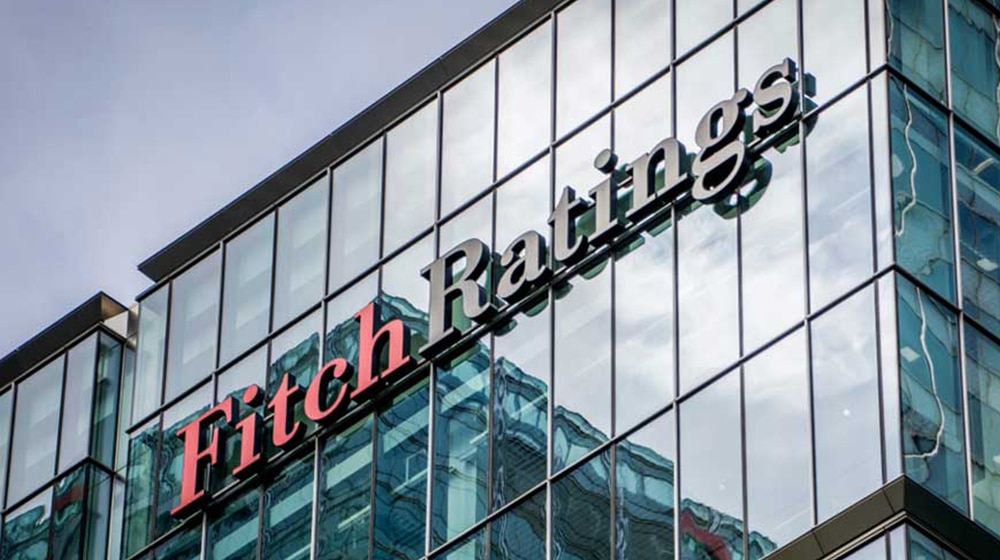Fitch Ratings has revised Pakistan’s Outlook to Negative from Stable while affirming its Long-Term Foreign-Currency (LTFC) Issuer Default Rating (IDR) at ‘B-‘.
According to the credit rating agency, the Revision of the Outlook to Negative reflects a significant deterioration in Pakistan’s external liquidity position and financing conditions since early 2022.
Fitch Ratings assume IMF board approval of Pakistan’s new staff-level agreement with IMF but see considerable risks to its implementation and continued access to financing after the programme’s expiry in June 2023 in a challenging economic and political climate.
Renewed political volatility cannot be excluded and could undermine the authorities’ fiscal and external adjustment, as happened in early 2022 and 2018, particularly in the current environment of slowing growth and high inflation, it added.
Former Prime Minister Imran Khan, who was ousted in a no-confidence vote on 10 April, has called on the government to hold early elections and has been organizing large-scale protests in cities around the country. The new government is supported by a disparate coalition of parties with only a slim majority in parliament. Regular elections are due in October 2023, creating the risk of policy slippage after the conclusion of the IMF programme.
Reserves under Pressure
Fitch Ratings stated that limited external funding and large current account deficits (CADs) have drained foreign exchange (FX) reserves, as the State Bank of Pakistan (SBP) has used reserves to slow currency depreciation. Liquid net FX reserves at the SBP declined to about $10 billion or just over one month of current external payments by June 2022, down from about $16 billion a year earlier.
External Deficit
The credit rating agency estimates the Current Account Deficit reached $17 billion (4.6 percent of GDP) in the fiscal year ended June 2022 (FY22), driven by soaring global oil prices and a rise in non-oil imports boosted by strong private consumption. Fiscal tightening, higher interest rates, and measures to limit energy consumption and imports underpin our forecast of a narrowing CAD to $10 billion (2.6 percent of GDP) in FY23.
Large Funding Needs
Pakistan’s public debt maturities in FY23 are about $21 billion. Maturities of about $9 billion are to bilateral creditors (chiefly Saudi Arabia and China), which should be fairly easy to roll over with an IMF programme in place. Much of the $5 billion in debt to commercial banks are also to China.
“The staff-level agreement will potentially unlock $4 billion in IMF disbursements to Pakistan in FY23, assuming board approval of a USD1 billion augmentation and extension to June 2023,” said the Fitch Ratings.
Policy Getting Back on Track
Pakistan’s ‘B-‘ rating reflects recurring external vulnerability, a narrow fiscal revenue base, and low governance indicator scores compared with the ‘B’ median. External funding conditions and liquidity will likely improve with the new staff-level agreement, stated Fitch Ratings.
Nevertheless, slippage against programme conditions is a risk and could quickly lead to renewed strains, while diminished FX reserves and high funding needs now leave less room for error. Pakistan’s access to market finance could remain constrained, it added.
Fiscal Worsening then Consolidation
Fitch Ratings estimates that the fiscal deficit widened to 7.5 percent of GDP (nearly Rs. 5 trillion) in FY22, from 6.1 percent in FY21. Tax reductions and subsidies on fuel and electricity account for most of the fiscal deterioration; these were introduced by the previous government in February and lasted until June.
It expects a narrowing of the deficit to 5.6 percent of GDP (about Rs. 4.6 trillion or $22 billion) in FY23, driven by spending restraint as well as by expanded taxation, including higher corporate and personal income taxes and increases in the petroleum levy. Their forecast of the fiscal deficit is about 1 percent of GDP wider than the authorities’ target.
Debt Expected to Decline
The credit rating agency estimates Pakistan’s debt/GDP at 73 percent as of FYE22, broadly in line with the current ‘B’ median, following an earlier GDP rebasing in FY21, which lowered the debt ratio by 12pp. It expects debt/GDP to decline to 66 percent in FY23 and remain on a downward trend, helped by high inflation and a modest primary deficit, which we forecast at 0.9 percent of GDP in FY23, down from 2.8 percent of GDP in FY22.
Other Debt Metrics Mixed
A low FX exposure at just over 30 percent of total debt has limited the negative impact of currency depreciation on debt dynamics. Nevertheless, debt/revenue (at over 600 percent in FY22) and interest/revenue (at about 40 percent) are significantly worse than the ‘B’ median. This largely reflects low general government revenue of 12 percent of GDP in FY22.
High Inflation, Monetary Tightening
Consumer price inflation averaged 12.2 percent in FY22 but accelerated to 21.3 percent YoY (6.3 percent mom) in June on hikes to petrol and electricity prices. The SBP forecast inflation of 18 percent-20 percent in FY23, as it raised its policy rate by 125bp to 15 percent at its most recent action on 7 July. SBP’s latest action took cumulative rate hikes to 800bp in this latest tightening cycle.
Fitch Ratings forecasts of average inflation of 19 percent in FY23 and 8 percent in FY24 largely reflect base effects, but recent and planned future energy price hikes will all fuel broad-based inflation, and mean inflation is skewed to the upside.
Overheated Economy; Falling Growth
Preliminary estimates show real GDP growth of 6 percent for FY22, up from 5.7 percent in FY21, mostly driven by private consumption, as in FY21, while net exports continued to weigh on growth. In their view, this largely reflected a loosening of fiscal policy in FY22, as well as a fairly loose monetary policy despite significant tightening throughout the year (ex-post real policy rates on the average negative in FY22).
The SBP estimates that the economy was operating above potential in FY22, and we forecast slower growth of 3.5 percent in FY23 amid fiscal and monetary tightening, high imported inflation, and a weaker external demand outlook, all of which will also hit household and business confidence.

























